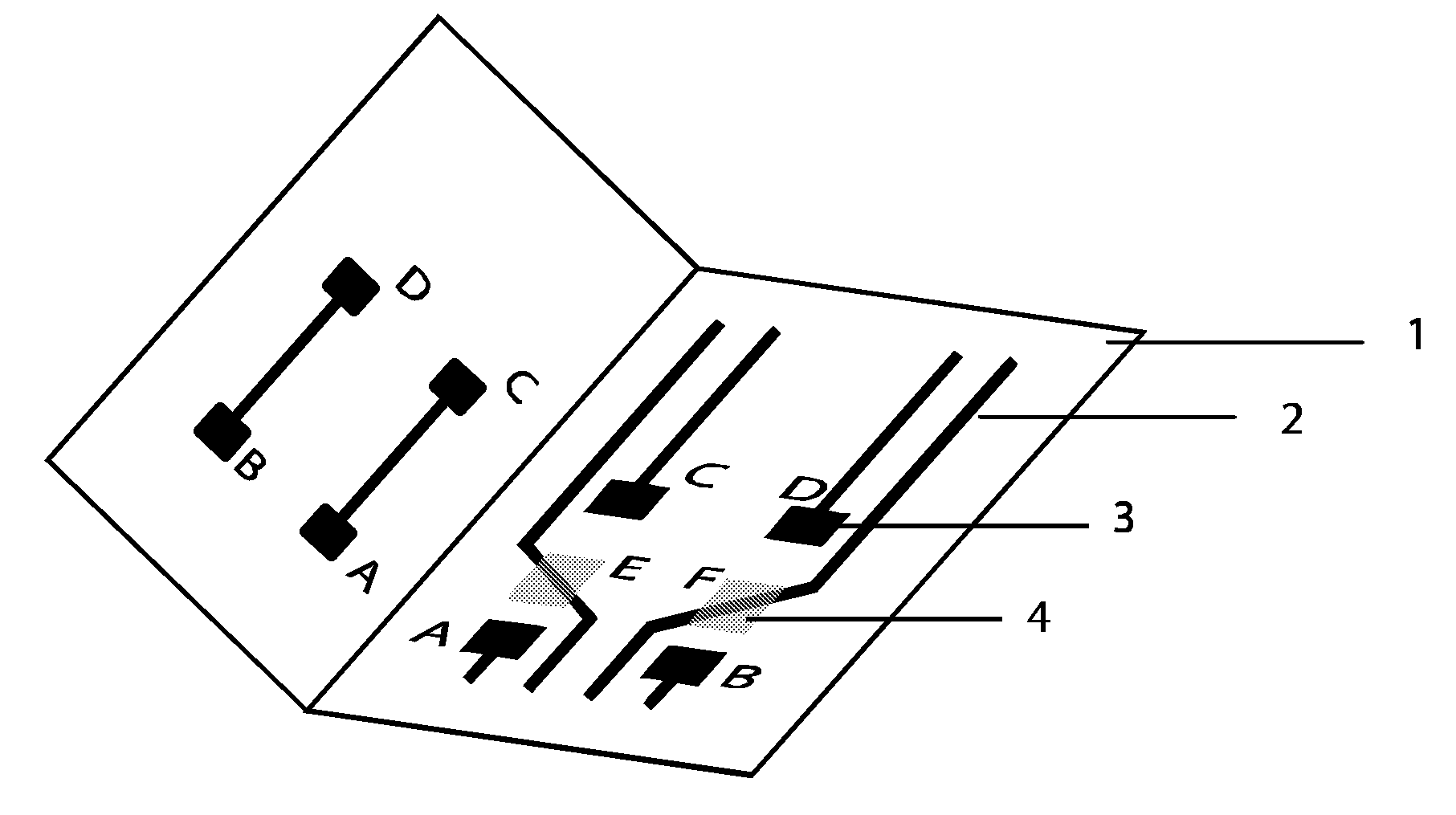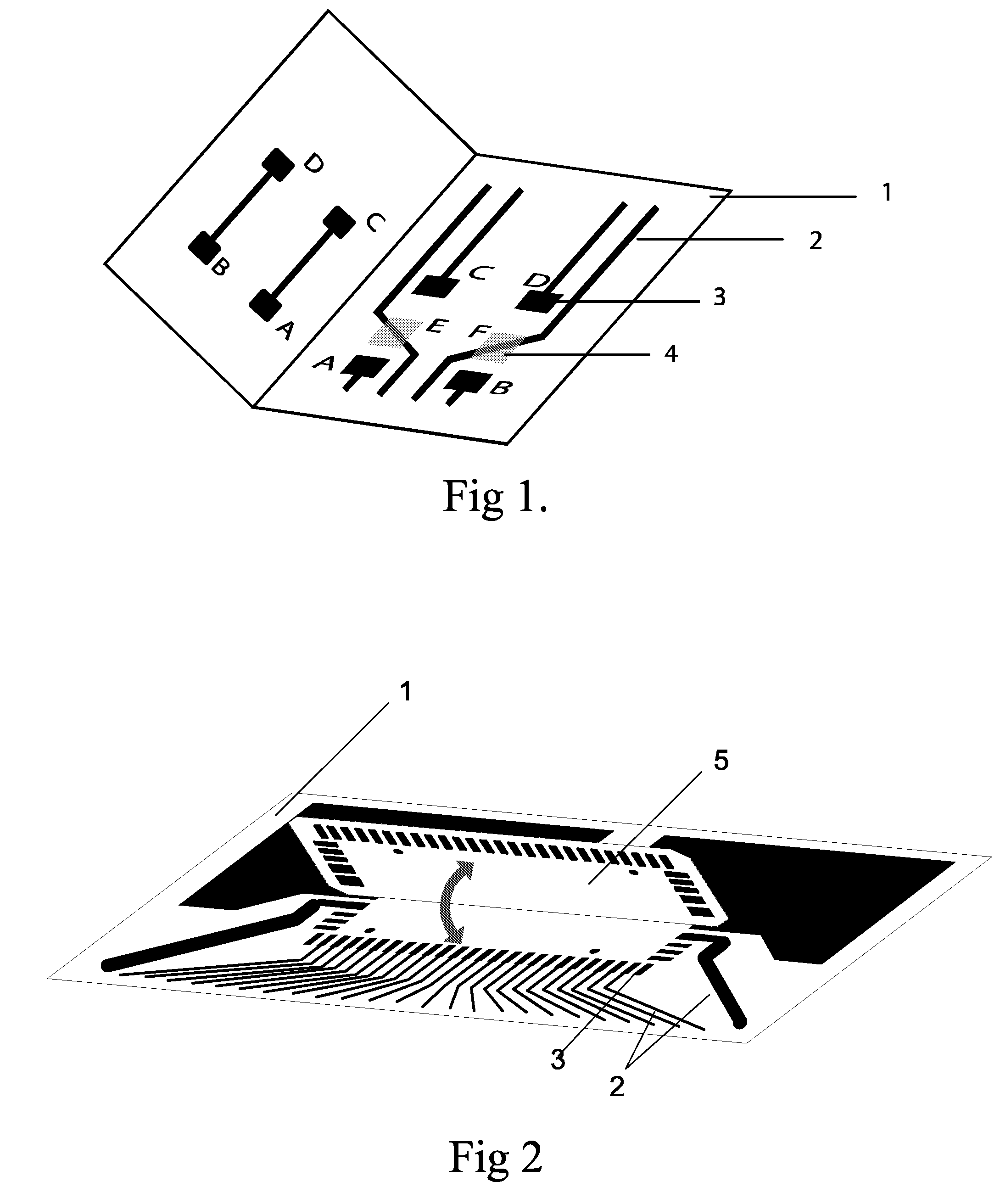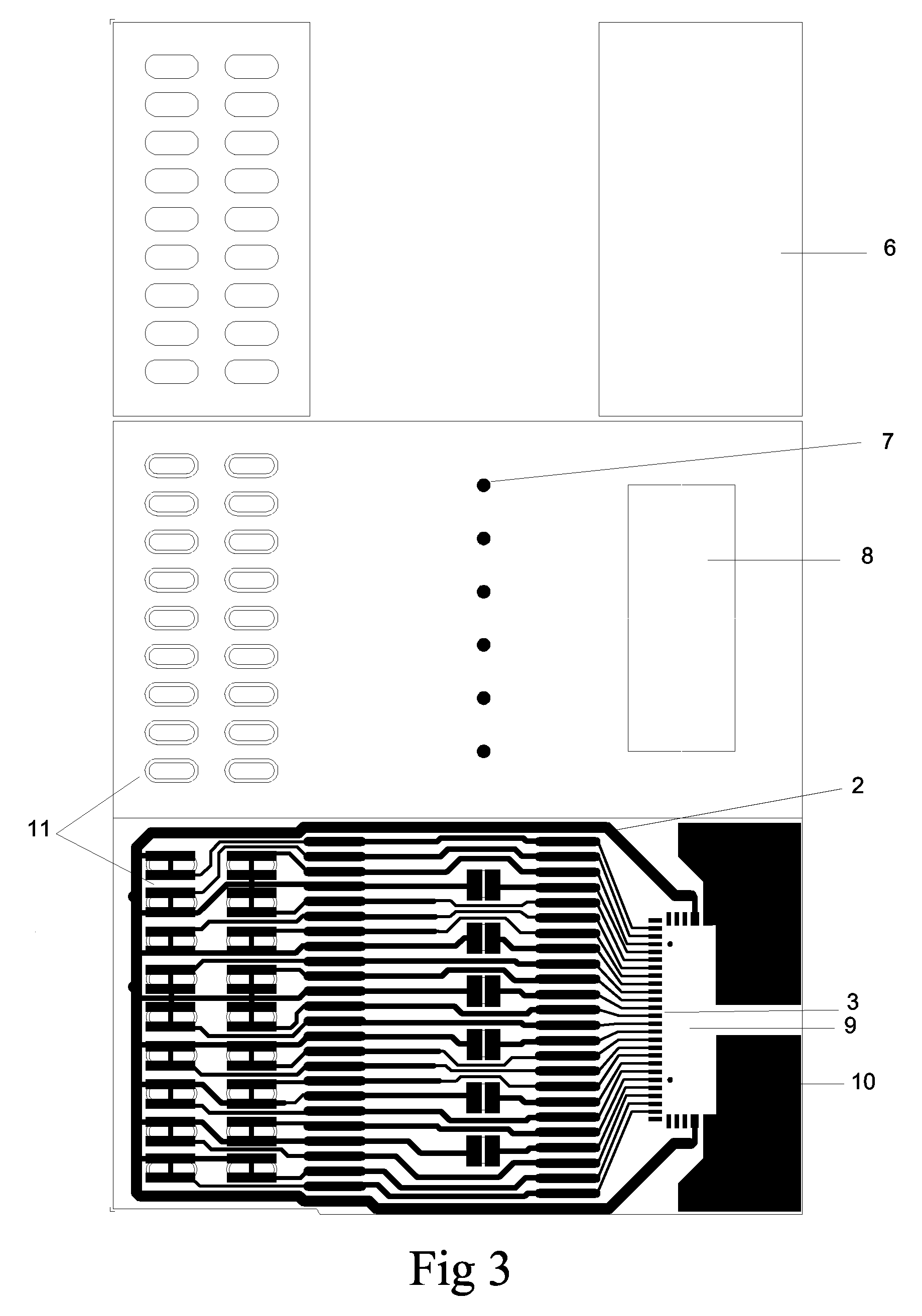Use Of Heat-Activated Adhesive For Manufacture And A Device So Manufactured
a technology of heat-activated adhesives and manufacturing processes, which is applied in the direction of printed circuit dielectrics, organic conductors, conductive materials, etc., can solve the problems of high sensitivity to the roughness of the substrate surface, difficult handling in an automated process, and high cost of tapes
- Summary
- Abstract
- Description
- Claims
- Application Information
AI Technical Summary
Benefits of technology
Problems solved by technology
Method used
Image
Examples
example 1
Step 1
[0071]A water-based thermoplastic Ethylene Acrylic Acid (EAA) emulsion (35% dry weight) (Trade name: MichemPrime 4983 RHSA) is mixed with 3% (based on the dry weight) carbon black of electrical grade and mixed to homogeneity. The viscosity of the mixture is increased by adding 2% (based on wet weight) of an alkali swell able emulsion, ASE (trade name: Viscalex HV30).
Step 2
[0072]The formulated adhesive is screen printed on the uncoated side of the paperboard. The whole surface is covered, with exception for the printed buttons. A 60 mesh silk screen is used. After air-drying in controlled humidity the paperboard is embossed and die-cut. Before heat activation of the adhesive additional lids are removed so that the area where the electronic module is to be mounted remains open. These areas are covered with liners to avoid undesired adhesion during the activation. The activation temperature is 120 C for 20 seconds. After cooling the laminate is creased according to material spec...
example 2
[0075]Mounting of an electrical component to a plastic film can be done following the below steps.
Step 1
[0076]A water-based thermoplastic aliphatic polyurethane emulsion (45% dry weight) (Trade name: Kiwotherm D120) is mixed with 15% (based on the dry weight) silver coated nickel spheres and mixed to homogeneity.
[0077]FIG. 4 shows that a polyester (Poly EthyleneNaphthalate, PEN) film (1) with a metallized pattern (14) of gold coated copper is coated with a dielectric on selected areas (12) to avoid short-circuitry.
[0078]Step 2
[0079]The polyester film is bar-coated with the adhesive to a resulting thickness of 15 μm after drying.
Step 3
[0080]A battery is placed on the battery pad (13) on the polyester film (1) and a stamp activates the adhesive and seals the battery at a temperature of 120 C for 5 seconds. The polyester film (21) is folded and the back of the battery is sealed the same way so that the battery is enclosed in the film, see FIG. 5.
example 3
[0081]Fabrication of an electrical assembly
Step 1
[0082]A water-based thermoplastic aliphatic polyurethane emulsion (45% dry weight) (Trade name: Kiwotherm D120) is mixed with 15% (based on the dry weight) silver coated nickel spheres and mixed to homogeneity.
[0083]A polyester (Poly EthyleneNaphthalate, PEN) film with a metallized pattern of gold coated copper (see FIG. 4) is coated with a dielectric on selected areas to avoid short-circuitry.
Step 2
[0084]The polyester film is bar-coated with the adhesive to a resulting thickness of 15 μm after drying.
Step 3
[0085]A battery is placed on the battery pad on the polyester film and a stamp activates the adhesive and seals the battery at a temperature of 140 C for 2 seconds. The polyester film is folded and the back of the battery is sealed the same way so that the battery is enclosed in the film.
[0086]A piezo-element (buzzer) is placed on the buzzer pad on the polyester film and a stamp activates the adhesive and seals the buzzer at a tem...
PUM
| Property | Measurement | Unit |
|---|---|---|
| Fraction | aaaaa | aaaaa |
| Electric charge | aaaaa | aaaaa |
| Concentration | aaaaa | aaaaa |
Abstract
Description
Claims
Application Information
 Login to View More
Login to View More - R&D
- Intellectual Property
- Life Sciences
- Materials
- Tech Scout
- Unparalleled Data Quality
- Higher Quality Content
- 60% Fewer Hallucinations
Browse by: Latest US Patents, China's latest patents, Technical Efficacy Thesaurus, Application Domain, Technology Topic, Popular Technical Reports.
© 2025 PatSnap. All rights reserved.Legal|Privacy policy|Modern Slavery Act Transparency Statement|Sitemap|About US| Contact US: help@patsnap.com



